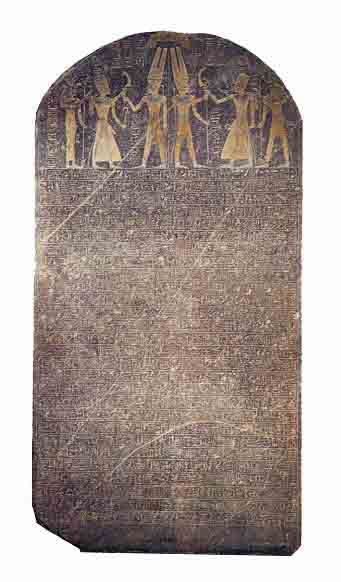Image Details

Jurgen Liepe
The Merneptah Stele, also known as the Israel Stele, bears the oldest known written reference to Israel. Engraved with its current text in 1207 B.C.E., the 7.5-foot-high, black granite monolith was discovered in the ruins of Merneptah’s funerary temple in western Thebes in 1896. Most of its hieroglyphic text celebrates Merneptah’s defeat of the Libyans and their Sea Peoples allies in his fifth regnal year. The text’s last three lines, however, briefly mention a campaign into Canaan against the background of a pacified eastern Mediterranean political situation: “The rulers lie prostrate saying ‘Peace’; none raises his head among the Nine Bows [Egypt’s traditional enemies, by now a literary convention]. Plundering is for Tehenu [Libya]. Hatti is at peace. Canaan has been plundered into every sort of woe. Ashkelon has been overcome. Gezer has been captured. Yano’am was made non-existent. Israel is laid waste, (and) his seed is not. Hurru [Canaan] is become a widow for Egypt. All lands are united in peace.” The mention of Israel appears slightly to the left of center in the second line from the bottom. The glyphs include determinatives—signs indicating a word’s category—that classify Ashkelon, Gezer and Yano’am as city-states; but the determinative attached to Israel identifies it as a people, apparently not yet possessing a distinct city.
These events in Merneptah’s Canaanite campaign seem to correspond to the battle reliefs attributed to Merneptah on the western face of the western wall of the Cour de la Cachette at Karnak. Three of the four battle reliefs portray besieged cities, one of which is positively identified as Ashkelon; the other two are preseumed to be Gezer and Yano’am. But the fourth shows only people under attack. So the question is: Does the panel without a city represent the Canaanites—described as “plundered Canaan” in the first sentence of the campaign description—or the Israelites— described as “laid waste” in the last line?
